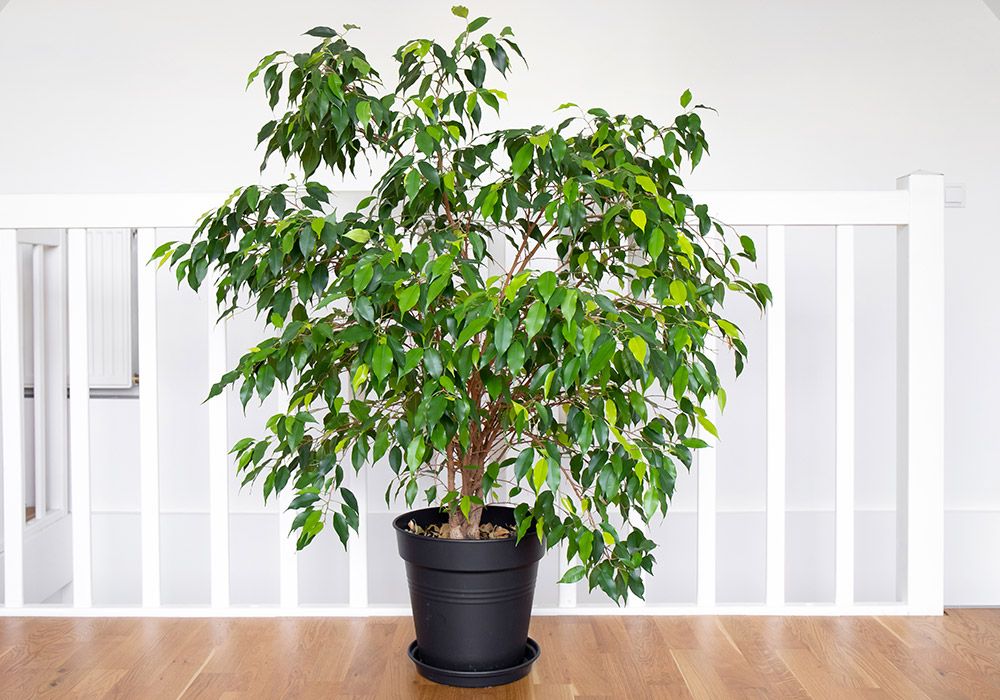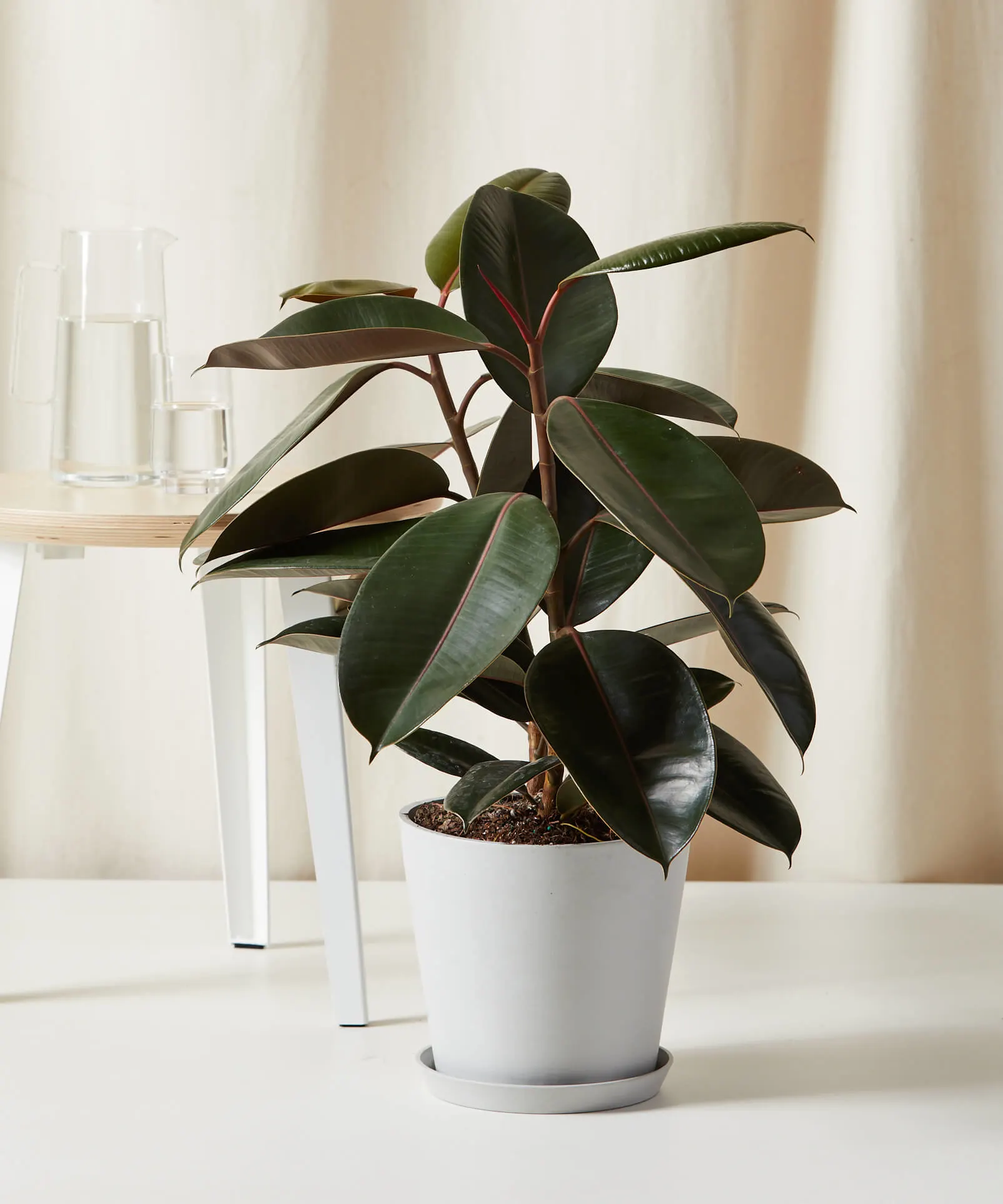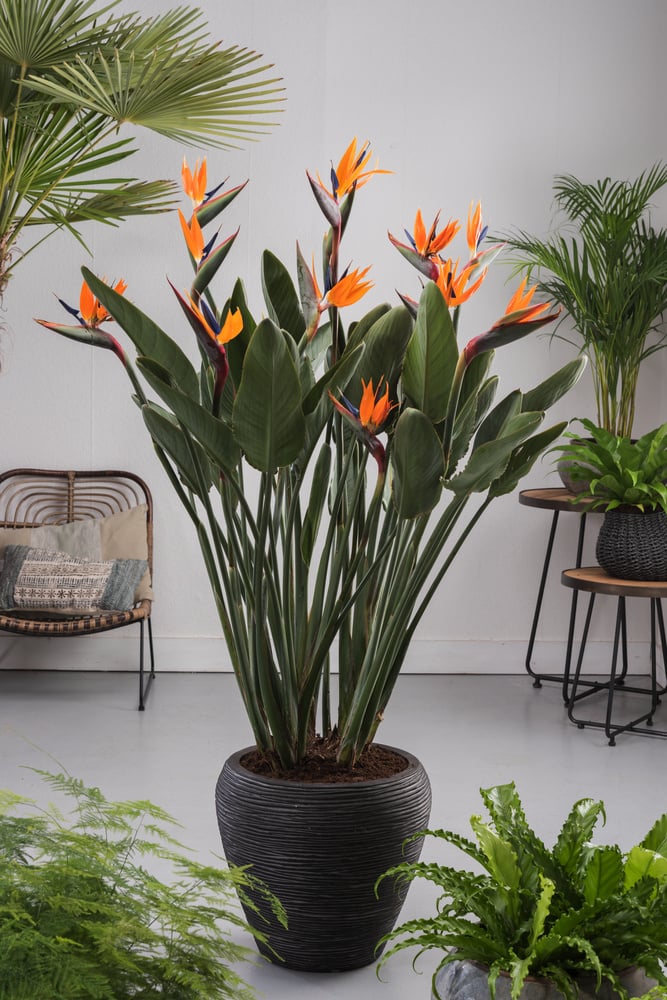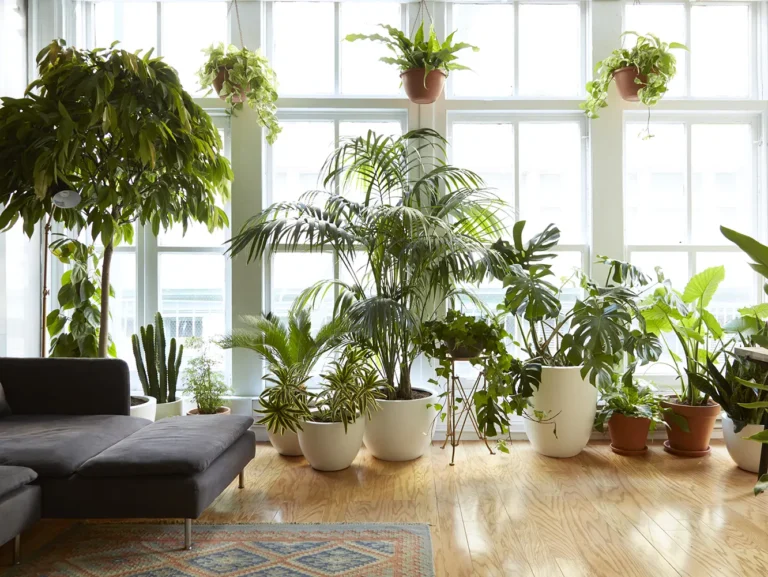Contents
Introduction
Living in a small apartment can be a fantastic experience—less space to clean, fewer rooms to worry about, and often a cozy, intimate vibe. But when it comes to adding some greenery, things can get a bit tricky. While houseplants can make your apartment feel more lively and inviting, choosing the wrong ones can lead to some big headaches.
Why is selecting the right plants so important for a small space? Well, it’s all about finding the right balance. You want plants that fit your apartment’s light, space, and maintenance conditions. Imagine a lush, towering plant blocking your only window or a high-maintenance plant demanding more attention than you can give—these are the kinds of problems you want to avoid.
In this guide, we’ll explore which plants might not be the best fit for your small apartment. We’ll cover plants that grow too big, need too much care, or come with other challenges that just aren’t practical for limited spaces. By understanding which plants to steer clear of, you can make better choices and enjoy the beauty of indoor plants without the stress. Let’s dive in and find out which plants are best avoided so you can keep your apartment looking and feeling great!
Plants That Grow Too Large
When you’re living in a small apartment, every inch of space matters. You don’t want to bring home a plant that starts off small and cute, only to watch it grow into something that takes over your living room. Some plants are known for their rapid growth and size, which can quickly become overwhelming in a compact space. Let’s look at a few common culprits that can outgrow your apartment faster than you might expect.
Ficus Trees
Ficus trees are popular indoor plants, often admired for their glossy leaves and elegant appearance. However, they have a sneaky habit of growing much larger than anticipated. These trees can easily reach the ceiling, with branches that spread out wide, taking up precious floor space. In a small apartment, a ficus can quickly turn from a charming houseplant into a cumbersome obstacle, making your space feel cramped and cluttered.

Rubber Plants
Rubber plants are another favorite among plant enthusiasts due to their thick, shiny leaves and sturdy stems. But don’t be fooled by their modest beginnings; rubber plants can grow several feet tall and wide, even indoors. If you’re not careful, you might find yourself constantly rearranging your furniture to accommodate your growing plant, or worse, dealing with leaves and branches that start to encroach on your living area.

Bird of Paradise
The Bird of Paradise is known for its stunning, tropical appearance, with large, banana-like leaves and striking flowers that resemble a bird in flight. While it can bring a bit of the tropics to your home, this plant needs plenty of room to spread out. In a small apartment, a Bird of Paradise can dominate the space, making it hard to navigate around and leaving little room for anything else. Plus, its broad leaves can block light from reaching other parts of the room, making your apartment feel even smaller.

Bringing these big plants into a small apartment might seem like a good idea at first, but they can quickly outgrow your space, making your home feel cluttered and less functional. It’s better to opt for smaller, more manageable plants that can thrive in a compact environment without overwhelming it.
High-Maintenance Plants
Adding plants to your apartment can be a great way to bring some life and color into your space. But not all plants are created equal—some require more attention than a pet! If you have a busy lifestyle or simply don’t want to spend too much time on plant care, high-maintenance plants can quickly become more of a burden than a joy. Let’s take a look at a few plants that might look beautiful but could end up demanding more care than you’re willing to give.
Gardenias
Gardenias are famous for their fragrant white flowers and glossy green leaves. They can make any room smell amazing, but don’t let their beauty fool you. Gardenias are notoriously fussy. They need just the right amount of sunlight, high humidity, and consistently moist soil. In a small apartment, maintaining the perfect environment for a gardenia can be a real challenge. You might find yourself constantly adjusting their location, misting them, and worrying about whether they’re getting enough light. If you don’t meet their exacting standards, they’ll start to drop their buds and leaves, leaving you with a sad-looking plant that’s more stress than it’s worth.
Orchids
Orchids are known for their exotic, long-lasting blooms and are often seen as a symbol of luxury and elegance. However, these delicate beauties require a very specific care routine. They need indirect light, precise watering, and the right balance of humidity. If you’re not on top of their care, they can quickly start to wilt or fail to bloom. Orchids also need special potting mixes and regular feeding, which can add to the complexity of keeping them happy. In a small apartment where space is at a premium, juggling all these care requirements can feel like a part-time job, and if something goes wrong, it can be frustrating to see your orchid decline.
Bonsai Trees
Bonsai trees are miniature trees that are meticulously pruned and shaped to create a beautiful, tiny version of nature. While they are certainly a unique and artistic addition to any home, bonsai trees require a lot of attention and expertise. They need regular pruning, precise watering, and the right amount of light to thrive. On top of that, they often require repotting and careful attention to their soil and roots. For someone living in a small apartment, the time and effort needed to maintain a bonsai can be overwhelming. If you’re not committed to the task, your bonsai could quickly lose its shape or even die, making all that hard work feel like it was for nothing.
Choosing high-maintenance plants like gardenias, orchids, or bonsai trees might seem like a great idea if you’re up for a challenge, but in reality, they can be demanding and unforgiving. Unless you’re ready to dedicate significant time and energy to their care, it’s probably best to choose plants that are more forgiving and easier to manage in a small apartment setting.
Plants with Strong Odors or Allergens
When you’re picking out plants for your small apartment, it’s easy to focus on looks and forget about other factors like scent and allergies. However, the smell of a plant or its potential to trigger allergic reactions can make a big difference in how comfortable your living space feels. In a small apartment, strong odors can quickly become overwhelming, and plants that produce allergens can make your space uncomfortable or even unhealthy. Let’s explore some plants that might be more trouble than they’re worth when it comes to scent and allergens.
Jasmine
Jasmine is often prized for its sweet, intoxicating fragrance, which can fill a room with a rich, floral aroma. While this might sound appealing, in a small apartment, the scent of jasmine can become overpowering, especially in enclosed spaces. What starts as a pleasant smell can quickly turn into something that’s too strong, potentially causing headaches or irritation. If you’re sensitive to strong smells or prefer a more subtle fragrance in your home, jasmine might not be the best choice for a small apartment.
Eucalyptus
Eucalyptus plants are known for their distinctive, medicinal scent that can bring a fresh, spa-like feel to your home. However, the smell of eucalyptus is strong and can linger in the air, which might not be ideal in a small, enclosed space. The scent can become overwhelming, especially if you’re not used to it or if it clashes with other scents in your home. Additionally, eucalyptus can be an irritant for some people, causing respiratory issues or allergic reactions. If you’re sensitive to smells or have allergies, keeping eucalyptus in a small apartment could lead to discomfort.
Certain Ferns
Ferns are popular indoor plants due to their lush, green appearance and ability to thrive in low light. However, certain types of ferns, like Boston ferns, can contribute to indoor allergens. These ferns can create a humid environment that encourages the growth of mold, which can be a problem in a small, poorly ventilated apartment. Mold spores can lead to allergic reactions, such as sneezing, coughing, or itchy eyes, making your living space less comfortable. If you or someone in your household has allergies, it might be best to avoid ferns that are prone to creating these conditions.
Choosing plants with strong odors or those that can trigger allergies might seem like a minor issue at first, but in the close quarters of a small apartment, these problems can quickly become magnified. It’s important to consider not just how a plant looks, but also how it might affect the air quality and comfort of your home. Opting for plants with a milder scent or those that are less likely to produce allergens can help you create a more pleasant and healthy living environment.
Plants with High Water Needs
Watering your plants can be a relaxing part of your daily routine, but when you live in a small apartment, plants with high water needs can become a bit of a hassle. These plants often require frequent watering, specific humidity levels, and careful attention to avoid overwatering, which can lead to water damage or mold in a small space. If you’re not careful, these water-loving plants can end up being more demanding than you bargained for. Let’s look at some plants that might be better suited to larger spaces or more dedicated plant parents.
Water Lilies
Water lilies are stunning plants often associated with serene ponds and water gardens. They’re beautiful to look at, with their floating leaves and delicate blooms, but they come with one major requirement—they need to live in water. In a small apartment, setting up and maintaining a water feature or indoor pond to accommodate water lilies is a big commitment. Not only do they need a lot of water, but they also require regular maintenance to keep the water clean and balanced. This can quickly become impractical in a small living space, where the humidity and moisture levels can cause problems like mold growth or water damage.
Aloe Vera
Aloe vera is often celebrated for its medicinal properties and low-maintenance nature, but it can be surprisingly tricky to care for, especially when it comes to watering. Aloe plants prefer to be on the dry side, and overwatering can lead to root rot. In a small apartment, where airflow might be limited, and drainage can be a challenge, getting the watering balance just right can be tough. You’ll need to be careful not to overwater, which means paying close attention to the soil and ensuring that excess water can drain away properly. If you’re not careful, you could end up with a sickly plant and a mess to clean up.
Boston Ferns
Boston ferns are known for their lush, feathery fronds and ability to add a touch of greenery to any space. However, they’re also notorious for their high humidity and water requirements. Boston ferns need to be kept consistently moist, and they thrive in humid environments. In a small apartment, especially one with dry air, maintaining the right conditions for a Boston fern can be a real challenge. You might find yourself constantly misting the plant or running a humidifier, which can be time-consuming and lead to other issues, like mold or mildew. The constant need for water and humidity makes Boston ferns a demanding choice for small spaces.
Plants with high water needs can add a lot of beauty to your home, but in a small apartment, they can also bring a lot of challenges. From potential water damage to the risk of mold, these plants require careful attention and the right environment to thrive. If you’re not ready to commit to the extra effort they demand, it might be better to choose plants that are more forgiving and better suited to small, low-maintenance living spaces.
Plants with High Light Requirements
Natural light can be a precious commodity in a small apartment, especially if your windows don’t get much direct sunlight. Some plants thrive on bright, direct light, but when you’re living in a compact space with limited natural light, these high-light plants can be challenging to keep happy. If you don’t have the right lighting conditions, these plants can struggle, becoming leggy, weak, or failing to grow altogether. Let’s take a look at a few plants that might require more sunlight than your apartment can provide.
Cactus Varieties
Cacti are often seen as low-maintenance plants, and while they don’t need much water, they do have one crucial requirement: lots of sunlight. Cacti thrive in bright, direct light, ideally in a spot where they can soak up the sun for most of the day. In a small apartment with limited window space or a lack of strong sunlight, keeping a cactus happy can be difficult. Without enough light, cacti can become elongated and weak, losing their characteristic compact and spiky appearance. If your apartment doesn’t have a sunny spot to offer, you might find that a cactus is more trouble than it’s worth.
Citrus Trees
Citrus trees, like lemons, limes, and oranges, can be a delightful addition to your home, offering not only beautiful greenery but also the potential for homegrown fruit. However, citrus trees are sun-lovers and need plenty of direct sunlight—ideally, at least 6-8 hours a day—to thrive and produce fruit. In a small apartment, finding a spot that provides enough light can be a challenge. Without sufficient sunlight, citrus trees can become leggy, their leaves may yellow, and they may not produce fruit at all. If your apartment doesn’t have ample light, a citrus tree could end up being a frustrating and disappointing choice.
Palms (e.g., Areca Palm)
Palms, such as the Areca Palm, are popular for their tropical appearance and ability to add a touch of the outdoors to indoor spaces. However, many palms require bright, indirect light to stay healthy and vibrant. In a small apartment with limited light, a palm can struggle to get the energy it needs, leading to pale leaves, slow growth, or even decline. Palms can also grow quite large over time, meaning they’ll need both sufficient light and space to spread out, which can be hard to provide in a compact living environment. If your apartment doesn’t get enough light, you might find that keeping a palm healthy is more work than you anticipated.
Choosing plants with high light requirements can be a challenge in a small apartment, especially if your living space doesn’t have the bright, sunny conditions these plants need. Without adequate light, these plants can struggle to grow, leading to frustration and disappointment. If your apartment is on the darker side, it’s better to opt for plants that can thrive in low to moderate light conditions, ensuring your indoor garden is both beautiful and easy to maintain.
Conclusion
Choosing the right plants for your small apartment can make a big difference in how comfortable and enjoyable your space feels. While it’s tempting to pick out plants based on their appearance, it’s important to consider how they’ll fit into your living environment. Plants that grow too large, need constant care, have strong odors or allergens, require a lot of water, or need high levels of light can turn what should be a relaxing, green addition into a stressful responsibility.
When you’re dealing with limited space, the key is to find plants that fit your lifestyle and your apartment’s conditions. Opt for smaller plants that don’t take over your room, low-maintenance options that won’t demand too much of your time, and species that are more forgiving if you don’t have the perfect light or humidity.
Summary of Key Points
We’ve covered a variety of plants that might not be the best fit for a small apartment. From plants that grow too large, like ficus trees and rubber plants, to high-maintenance choices like gardenias and orchids, we’ve looked at how these plants can outgrow or overcomplicate your living space. We also touched on plants with strong odors or allergens, like jasmine and eucalyptus, which can overwhelm small spaces. Plants with high water needs, such as water lilies and Boston ferns, can be difficult to manage in compact environments, while those requiring lots of light, like cacti and citrus trees, may struggle without the right conditions.
Tips for Choosing the Right Plants
When choosing plants for a small apartment, look for species that are well-suited to your specific living conditions. Consider low-light tolerant plants like snake plants or pothos if your apartment doesn’t get much sunlight. If you want low-maintenance options, try succulents or ZZ plants, which don’t need frequent watering. And if you’re concerned about space, opt for smaller plants or those that grow vertically rather than spreading out.
Encouragement for Plant Enthusiasts
Bringing plants into your home can be a rewarding experience, adding beauty, freshness, and even a sense of calm to your space. Even in a small apartment, there are plenty of plant options that can thrive without causing unnecessary stress. By choosing the right plants, you can create a green oasis that enhances your living environment and makes your apartment feel like home. So, don’t be discouraged—start small, and find the plants that will bring you joy without taking over your space or your time.



